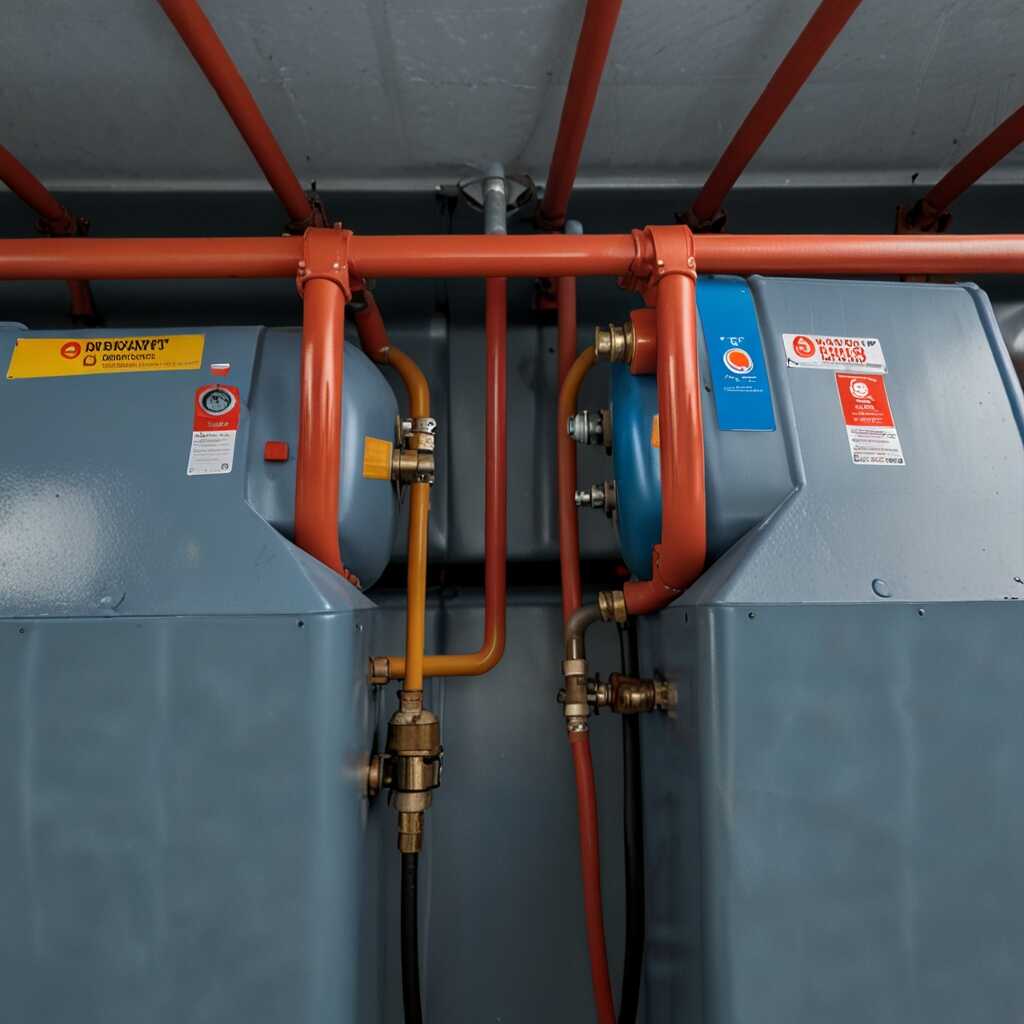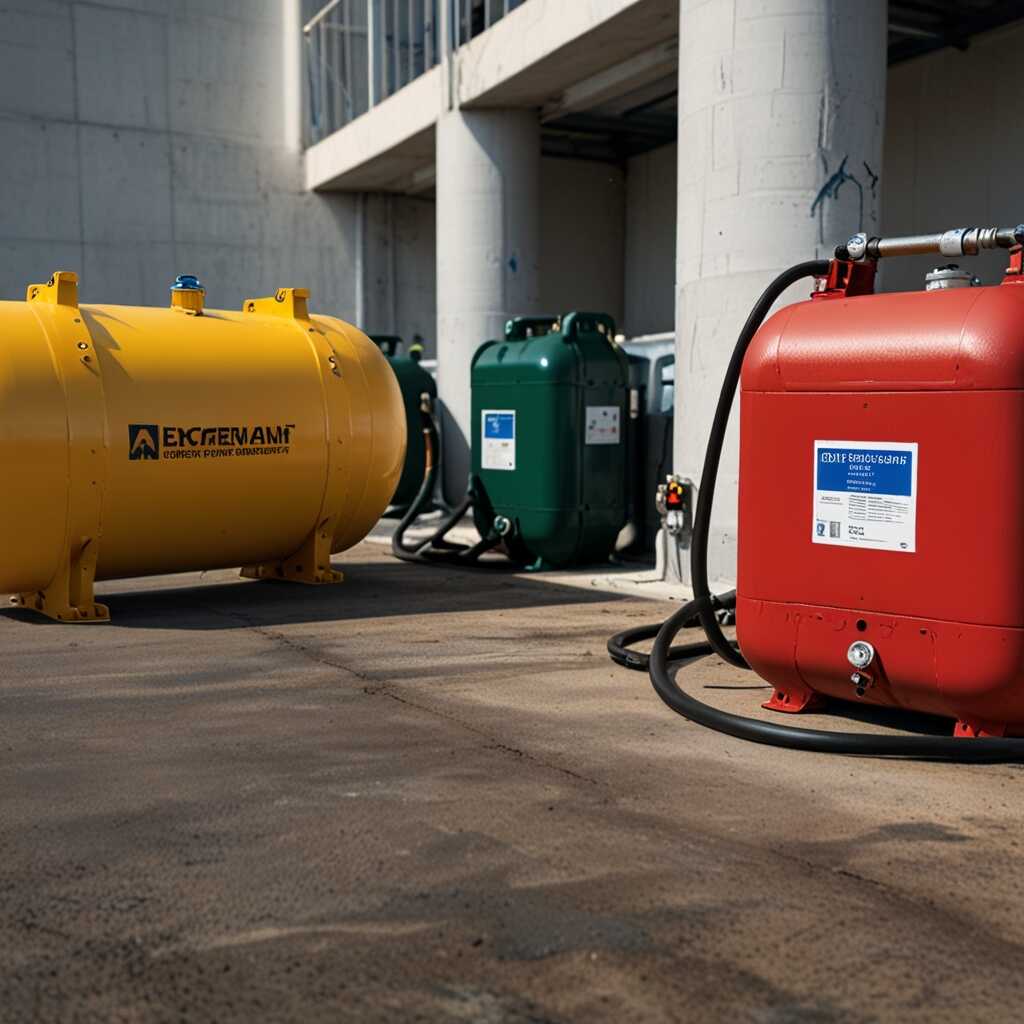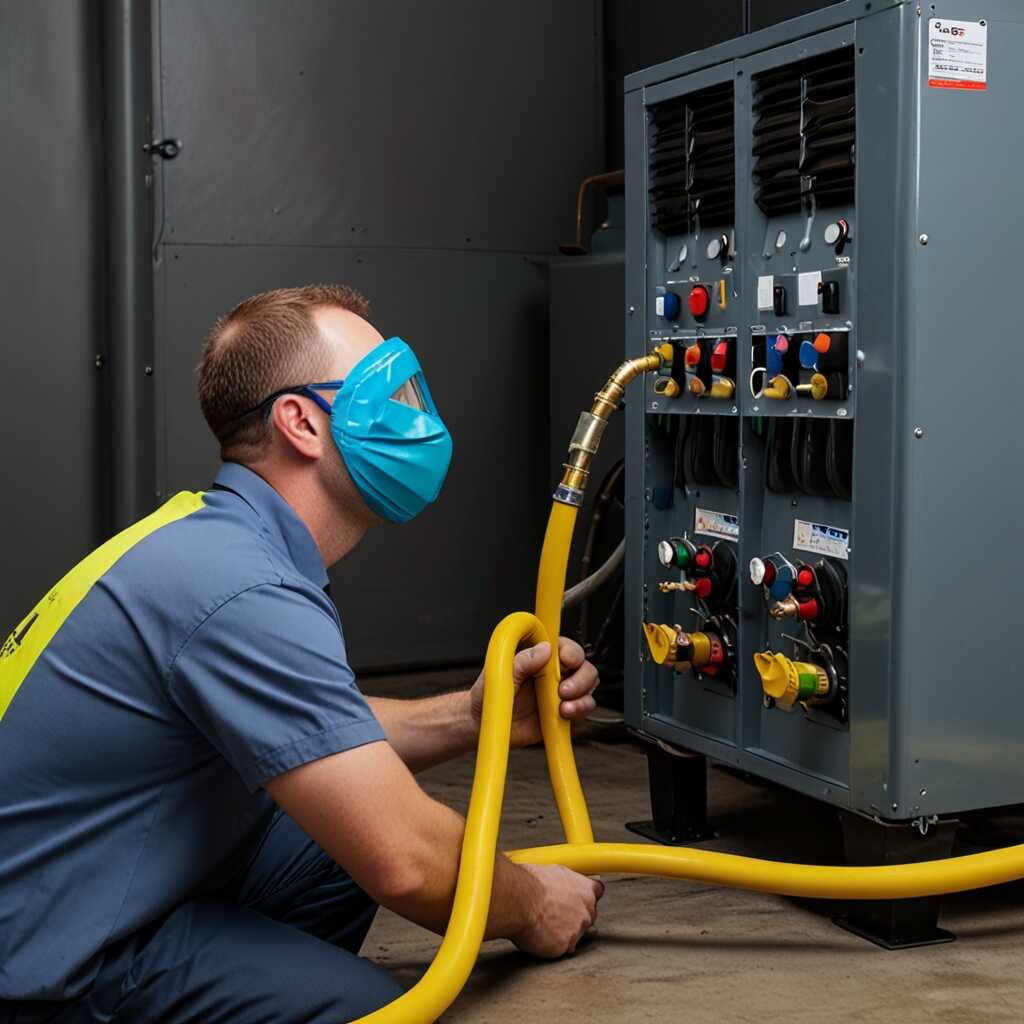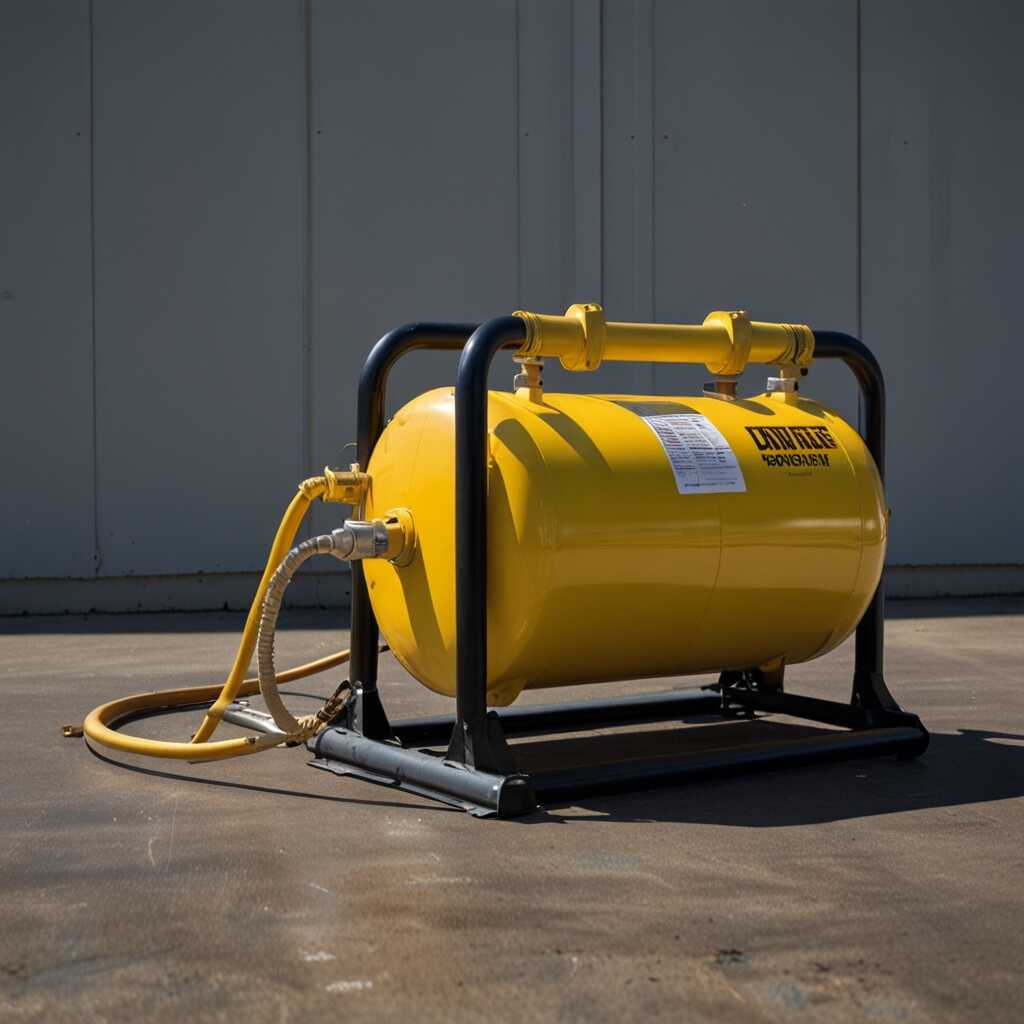Electronic refrigerant identification technology significantly improves the efficiency of refrigerant recovery processes. By accurately identifying refrigerant types, this technology saves valuable time for HVAC professionals during recovery operations. Refrigerant Recovery Pro emphasizes the importance of integrating these tools to streamline recovery efforts and ensure compliance with regulatory standards. Understanding how this technology works can aid HVAC technicians in enhancing their workflow and reliability in refrigerant management.
Understanding Electronic Refrigerant Identification Systems
Electronic refrigerant identification systems are advanced tools integrated into refrigerant recovery machines. They identify the type of refrigerant present in a system accurately and quickly. These systems enhance efficiency by eliminating the need for manual testing or guesswork. Instead, they provide immediate and reliable identification results. This automation streamlines the recovery process and helps HVAC technicians avoid costly mistakes. Additionally, electronic systems have the capacity to handle various refrigerants, ensuring compatibility. According to industry research, these systems can save technicians up to 30% of recovery time compared to previous methods.
Benefits of Electronic Refrigerant Identification Systems for HVAC Technicians
The benefits of using electronic refrigerant identification systems for HVAC technicians are substantial. First, these systems provide accurate identification of refrigerants, which greatly reduces the risk of cross-contamination. They are designed to enhance efficiency by quickly supplying reliable data on the refrigerants being handled. Technicians can confidently proceed to recovery or recycling processes. Electronic systems also offer features like robust reporting, allowing technicians to document recovery results. This, in turn, improves compliance with environmental regulations. The practical use of electronic identification systems supports safer and more effective refrigerant management, ensuring that HVAC technicians deliver the highest quality service.
How Electronic Systems Accelerate Refrigerant Recovery Processes
Electronic refrigerant identification technologies significantly enhance efficiency during refrigerant recovery processes. These technologies provide precise identification of refrigerants, ensuring technicians use the correct recovery methods. This reliability avoids costly mistakes and unnecessary downtime. HVAC professionals benefit from features like built-in data analytics, which streamline operations. Real-world applications show that using electronic systems can improve process speed by 25-50%. This allows more refrigerants to be recovered in less time, enabling technicians to handle multiple jobs effectively within a day.
Key Features of Electronic Refrigerant Identification Systems
Electronic refrigerant identification systems offer several key features that improve recovery processes. These systems include dual refrigerant detection capabilities, allowing technicians to identify both common and exotic refrigerants. They also feature user-friendly interfaces and compact designs, making them easy to operate in various job sites. Many systems come with built-in refrigerant data storage and retrieval options, facilitating enhanced testing and reliable results. This ensures technicians have easy access to historical data, which can help refine recovery tactics and improve performance on future tasks.

Impact of Accurate Refrigerant Identification on Recovery Outcomes
Accurate refrigerant identification is essential in the recovery process. Misidentifying refrigerants can lead to serious hazards, including system damage, safety risks, and regulatory non-compliance. Electronic identification systems help reduce these risks by providing reliable data and ensuring accurate classifications. Misidentification often occurs with common refrigerants such as R-410A, R-22, and R-134a, each having distinct properties that affect recovery methodologies. Proper identification enhances recovery efficiency and can save HVAC technicians up to 30% of their time during recovery processes.
How Electronic Systems Improve Refrigerant Identification Accuracy
Electronic identification systems deliver advanced features that significantly enhance the accuracy of refrigerant identification. These systems can test multiple refrigerants simultaneously, providing precise data to technicians. By using built-in sensors and databases, these devices compare the identified refrigerant with known standards, ensuring reliability. This technology not only improves safety but also streamlines recovery operations. HVAC professionals using electronic systems can confidently manage refrigerants, which leads to quicker recovery times and better compliance with regulations. The ease of testing and reliability of results make these systems a proven solution in today’s industry.
Key Statistics on Refrigerant Identification Technology
- Electronic refrigerant identification reduces recovery time by up to 50% compared to traditional methods.
- Technicians can identify refrigerants in less than 10 seconds using electronic devices.
- Over 80% of HVAC professionals use recovery machines with electronic identification technology.
- Approximately 70% of refrigerant recovery is now performed with electronic aids.
- Using these devices can lead to a 30% increase in operational efficiency during recovery.
- Daily recovery tasks can take 1-2 hours less using electronic refrigerant identification.
- Technicians report a 90% satisfaction rate with electronic identification tools.

Compliance with Environmental Regulations Made Easier
Electronic refrigerant identification enhances compliance with environmental regulations by ensuring accurate refrigerant recovery. It provides HVAC professionals with reliable data on the type of refrigerant used. This helps in meeting the Environmental Protection Agency (EPA) mandates for proper refrigerant handling. Electronic systems streamline recovery workflows, reducing human error and ensuring the percentage of recovered refrigerants meets regulatory standards. The key environmental regulations HVAC professionals should consider include the Clean Air Act and specific state regulations that govern refrigerant disposal. Many electronic refrigerant identification systems can accurately identify up to 7 or more refrigerant types, ensuring high efficiency and compliance in every recovery operation.
Importance of Accurate Refrigerant Identification in Compliance
Accurate refrigerant identification is essential for compliance with EPA regulations. It prevents the release of harmful refrigerants into the atmosphere and ensures that recovered materials are processed correctly. Systems using electronic refrigerant identification significantly reduce the risk of cross-contaminating refrigerants during recovery. By providing HVAC technicians with real-time data about refrigerants, these systems increase productivity and help maintain a clean working environment. This efficiency not only meets regulatory demands but also enhances the overall safety and effectiveness of refrigerant recovery processes.

Evaluating Traditional Methods Against Modern Techniques
Traditional refrigerant recovery methods typically involve manually identifying refrigerants, which can lead to errors and inefficiencies. These methods often require technicians to test and analyze refrigerants, impacting recovery time. In contrast, modern approaches using electronic identification technology streamline the process by quickly and accurately identifying types of refrigerants. This technology enhances time efficiency and effectiveness, providing reliable data. For instance, common refrigerants like R-134a, R-410A, and R-22 easily benefit from electronic identification. Reports indicate that technicians can save up to 50% of the time typically spent in recovery by employing electronic identification features.
Speed and Accuracy Advantages of Electronic Refrigerant Identification
Electronic refrigerant identification offers significant speed and accuracy improvements over traditional methods. This technology allows HVAC technicians to quickly detect refrigerant types and quantities without prolonged analysis. The devices designed for this identification are durable and reliable, providing clear information at a glance. They help reduce human error and enhance overall performance in refrigerant recovery. Technicians can focus more on servicing equipment, improving operational efficiency. According to research, effective use of these tools can lead to faster recovery times and better compliance with environmental regulations.
Advantages of Utilizing Advanced ID Tools
- Electronic identification guarantees accurate refrigerant detection and prevents mistakes.
- This technology ensures compliance with environmental regulations during recovery.
- Improved speed results in more jobs completed in a limited time frame.
- Users appreciate enhanced safety from precise identification reducing accidental releases.
- Reduced training time for new technicians on refrigerant recognition is a key benefit.
- These tools simplify communication about refrigerants used in systems, aiding collaboration.
- Technicians report decreased wear on recovery equipment due to proper refrigerant handling.

Training Needs for Effective Adoption of New Technologies
Training HVAC technicians on electronic refrigerant identification systems is crucial for effective implementation. Key training aspects include an understanding of the technology’s features, functionalities, and best practices for usage. Technicians must be able to interpret the data provided by these systems, ensuring reliability and accuracy during refrigerant recovery. Programs should focus on hands-on experience, emphasizing testing and troubleshooting techniques. A well-structured training program can take approximately 12 hours to cover essential knowledge and practical skills. This time investment helps technicians become more comfortable and efficient with the technology, improving overall recovery processes.
Essential Features of Electronic Refrigerant Identification Technology
Technicians using electronic refrigerant identification technology should focus on understanding specific features that improve recovery efficiency. Important features include the device’s ability to quickly identify refrigerant types, read accurate pressure and temperature data, and interpret readings in real time. These systems enhance reliability by minimizing the risk of cross-contamination and ensuring compliance with regulatory guidelines. Moreover, integrating built-in testing functionalities helps technicians verify the equipment’s performance before use. Focusing on these functionalities during training will ensure technicians are well-equipped to utilize this technology effectively in their daily recovery tasks.
Insights into the Future of Refrigerant Recovery Technologies
The future of refrigerant recovery technologies looks promising with innovations like smart sensors and AI-driven systems. These technologies will improve efficiency and enhance the user experience by providing precise refrigerant identification. Collaborations among HVAC manufacturers, regulatory agencies, and technology firms will further streamline processes, ensuring compliance and enhancing reliability. By 2025, electronic refrigerant identification systems could save technicians up to 30% of their recovery time, making recovery procedures faster and more reliable.
Emerging Trends in Refrigerant Recovery Technologies
Emerging trends in refrigerant recovery technologies focus on automation and real-time data analysis. For instance, advanced electronic identification systems can automatically detect refrigerant types and quantities during recovery. These systems not only reduce human error but also ensure compliance with EPA regulations. Companies are investing in technologies that connect recovery machines to cloud-based platforms. This enables technicians to access data remotely, helping them make informed decisions quickly. The integration of these technologies into HVAC systems will continue to enhance efficiency and reliability as the industry evolves.
Comparative Analysis of Relevant Brands and User Profiles
- Brand A is known for its user-friendly electronic identification devices that offer quick results.
- Brand B provides reliable equipment, but its high price is a common concern among users.
- Brand C specializes in compact electronic tools ideal for mobile technicians on-the-go.
- Facilities with older systems often prefer Brand D due to compatibility with various refrigerants.
- Property maintenance units benefit from Brand E’s comprehensive support and training resources.
- Technicians in commercial settings often seek features in Brand F’s devices that ensure faster job completion.
- HVAC educators highlight the importance of specific training on each brand’s unique offerings.
Case Studies Demonstrating Time Savings with Technology
This section provides real-world examples of how HVAC professionals benefit from electronic refrigerant identification technology. For instance, a case study involving a commercial HVAC service team revealed that utilizing electronic refrigerant identifiers led to an average time savings of 30% during refrigerant recovery tasks. This was achieved by eliminating the need for manual testing methods and enabling quicker identification of refrigerants. Another example highlighted a residential technician who decreased recovery time from 45 minutes to just 15 minutes by relying on electronic identifiers. These examples show that electronic refrigerant identification significantly enhances workflow efficiency.
Implementation Strategies for Electronic Refrigerant Identification
HVAC professionals can adopt electronic refrigerant identification technology in various ways to improve task performance. First, technicians should integrate electronic identifiers into their refrigerant recovery machines. These devices provide reliable readings of refrigerant types, which streamlines the recovery process. Additionally, they can undergo training sessions to maximize the use of these identifiers, ensuring they become familiar with the equipment’s features. By utilizing electronic refrigerant identification effectively, technicians can expect to enhance their workflow efficiency and save valuable time on every job. The combination of reliable technology and skilled experience will result in impressive improvements in refrigerant recovery tasks.